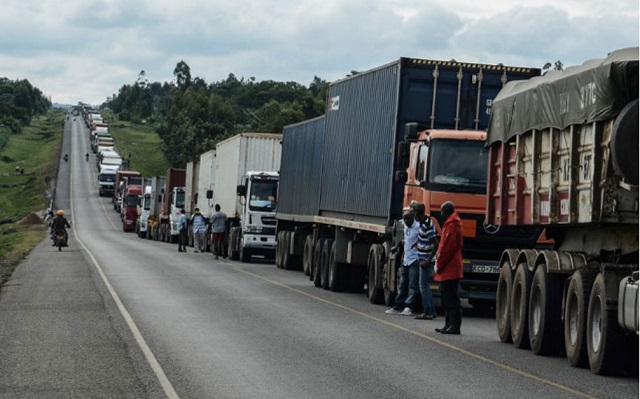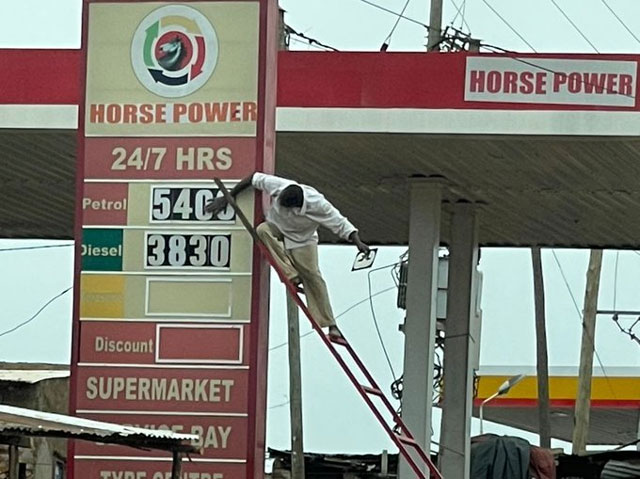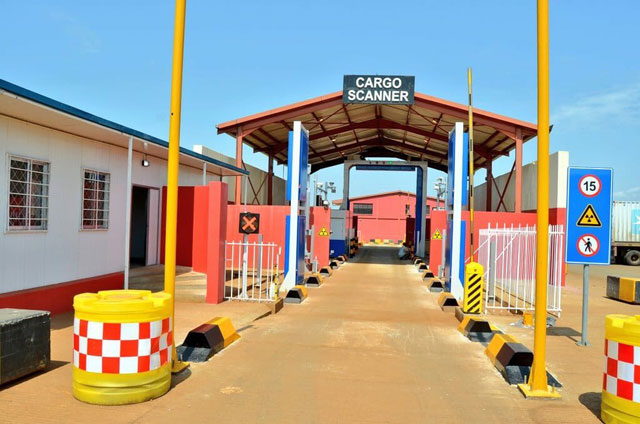
Did URA, Ministry of Health cause it?
Kampala, Uganda | IAN KATUSIIME | An unreasonable testing protocol, greed and an unresponsive government to popular needs has seen Ugandans treated to the worst of January blues with fuel prices going as high up as UgShs10, 000 for a litre. The prices are not expected to stabilise soon.
The spillover effects will also manifest for an extended period; even when the economy opens fully starting on Jan. 24.
According to some experts, the current fuel crisis could have been predicted and averted. They say some of the underlying causes of the hike were noticeable last year around September 2021 and appeared to peak two months later in November.
Based on this, the question that has been on the minds of Ugandans is: why did the government sit back and watch as a 50-100km snarl up build up on the Uganda-Kenya border town?
Critics say the fuel crisis has exposed the highest echelons of government decision making which involves major ministries like Finance, Health, and Energy.
Prime Minister Robina Nabbanja’s flippant take on the issue in a viral video clip displayed to most Ugandans how the government leadership behaves in times of crisis.
President Yoweri Museveni has stayed silent on the issue. But even with the fuel crunch well into its third week, Nabbanja’s attempt to speak to the public on the issue did not communicate anything and she appeared clueless of what was going on.
In a briefing with journalists, Minister for Energy Ruth Nankabirwa, opted for a broader view saying for as long as Uganda remains a net importer of petroleum products, its hands will always be tied. Nankabirwa cautioned fuel dealers not to use the current shortage to diddle Ugandans.

Leader of Opposition Mathias Mpuuga wrote to the Speaker of Parliament calling for a special parliamentary sitting to discuss the fuel crisis.
“This is premised on the fact that the crisis is escalating and requires urgent attention before it manifests into a huge economic and security crisis,” Mpuuga said in his letter.
Bodies like Uganda Revenue Authority (URA) and the larger role of cabinet have also been on the spot for foot dragging as an angry public deals with a fuel crisis possibly last seen in the days of the post-election violence in Kenya in 2008 when Uganda was cut off from its main supply route.
The collective inability to of government agencies to communicate to the public in lay terms simply built up more anger and forced fuel dealers to super hike the trickles of fuel they had left in their stations.
Matters were not helped when in the middle of the crisis, URA cargo scanners at the Malaba border point broke down- dashing hopes of fuel dealers in Kampala and elsewhere desperately waiting for fuel. By the time they were operational again, the snarl up had become longer and frustration was spilling over as far as Arua, Kabale, Gulu.
With Covid testing suspended, there is a slight improvement but scanners are still slow on top of other complications according to a source stationed at the Malaba border post.
“Specifically for fuel, UNBS has to mark every truck and that’s also a cause for delay. But as of this morning, the trucks were about 15km into Kenya and reducing from yesterday’s 28km,” the source told The Independent on Jan. 20.
The source added that the gantry cargo scanners are faster because they’re drive through.
“The challenge was that the one for Malaba malfunctioned and the one for Busia was knocked by a truck. So URA had to get a mobile one from the South Sudan border. Repairs of the main ones are taking ages.” he explained.
As URA did its firefighting on social media, so did other government agencies.
Ramathan Ggoobi, the Secretary to the Treasury and Permanent Secretary at the Ministry of Finance, came under fire when he explained away the fuel crunch in pure economic lingo while saying the crisis had nothing to do with economics. “Fellow Ugandans, the current spike in fuel prices has nothing to do with economics. It was caused by a temporary exogenous shock caused by administrative decisions to control the spread of #COVID19, here & globally. The responsible parties are addressing them.”
Ggoobi appeared to be levelling criticism at the Ministry of Health for a decision late last year to subject everyone entering the county to a COVID19 test at a cost of $30 (UgShs105, 000) — setting the stage for a tough new year when most people and business dealers are thrift in their planning and budgeting.
The decision angered truck drivers and Ugandans in general who were planning for school re-opening and were still recovering from another covid-hit year with a full lockdown that further crippled recovery mid-last year.

URA’s mess
In all this, URA has scrambled for a way out of the quagmire. A truck knocked a URA cargo scanner at Busia in the middle of the truck pile up between Jan.14 and 17. URA then sent a mobile scanner from Malaba to Busia but it also malfunctioned. It is at this point that all trucks were ordered to route through Malaba. However due to the overwhelming workload, the scanner at Malaba also broke down.
Initially, government wanted to waive covid protocols for only fuel tankers but other drivers would not accept this so the government gave in and allowed all trucks to move. All agencies were directed to make sure trucks are moving, a source at Immigration said.
However just after a few days of this decision, URA realised this would be counter to its targets if it lets all trucks through without going through all processes. So the tax body reversed its earlier decision about skipping protocols, the immigration official said.
A meeting held between URA and its Kenyan counterpart, Kenya Revenue Authority (KRA), resolved to deploy more staff of either organisation at the Malaba border entry point as the crisis showed no sign of abating.
The last time there was a notable fuel hike, in 2011, then opposition leader Dr. Kizza Besigye led the famous walk to work protests. This was a few months after the 2011 presidential elections where Besigye was contesting for a third time against President Museveni.
Previously fuel prices in Uganda shot up because of a variety of reasons including; speculation by the market players about an anticipated tax levy, too much hoarding in the market which is carried out by the non-branded stations or as they are technically called ‘independents’.
These are stations other than the established ones of Total, Shell, City Oil, Oryx that have penetrated the market and are the reason for the increasing number of fuel stations across the country. They keep lowering the prices to undercut the big players creating a vicious cycle of price instability.
Jinja reserve facility
Questions are now pointing back to the Jinja Storage Terminal (JST), a fuel reserve facility, with a 30million litre capacity. The facility, which is supposed to store fuel to cushion the country from supply shocks, has for many years been poorly managed by government which is often forced to contract private companies for some of the maintenance work.
The fuel crisis remains a difficult task for the government after media reports suggested that Uganda’s fuel reserves are empty.
According to these reports, officials of the Uganda National Oil Company (UNOC) told parliament that Uganda’s fuel reserves rain dry as soon as signs of the hold up at the border and fuel shortage started to emerge.
Experts say the cost of filling the tanks at JST are high and thereafter ensuring safety and security of the reserves requires commitment of large budgets and a wealth of expertise in the operation of petroleum terminals.
In 2012, the Ugandan government hired a private company; Hared Petroleum Limited (HPL), to operate JST by storing at least 12 million litres of fuel as a minimum due to the aftermath of the 2008 post-election crisis in Kenya.
However, HPL reportedly failed to live up to the terms and conditions of the contract, as it only managed to regularly store less than 50% of the required 12 million litres. It was replaced by One Petroleum Uganda but UNOC eventually resumed management of the reserve facility but experts say more needs to be done to bolster Uganda’s fuel reservoirs.
The government had planned to set up more of such strategic facilities across the country to store more than 100 million litres of fuel but the plan could not be realised.
****
 The Independent Uganda: You get the Truth we Pay the Price
The Independent Uganda: You get the Truth we Pay the Price




Rising fuel prices are due to instability in both Russia and Ukraine. That is to say the conflict of Russia and Ukraine has led to increasing fuel prices.
Government should come in with another approach on how to minimise the rising fuel prices.